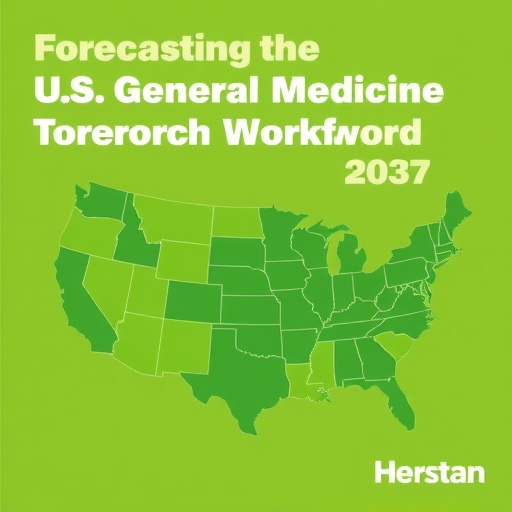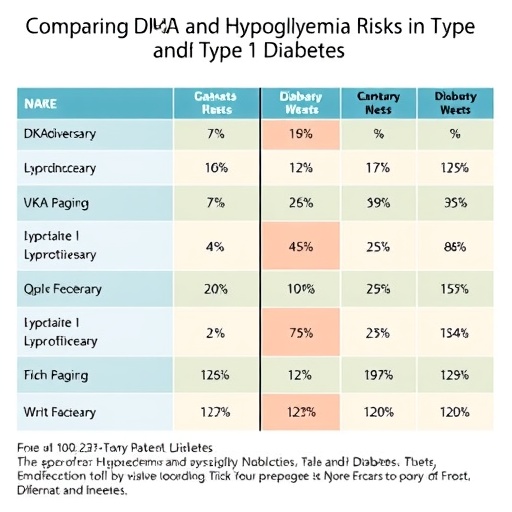The increasing complexities in healthcare pose significant challenges to the American healthcare system, particularly regarding the supply and demand for medical professionals. One of the most pressing areas of concern is the workforce of general internal medicine physicians. A recent study by Silvestre et al. highlights critical projections related to this workforce through to 2037, providing a detailed analysis that underscores the growing gap in availability and need for these healthcare providers.
In their comprehensive investigation, the authors delve into the intricacies of the general internal medicine physician workforce in the United States. They thoroughly evaluate current patterns of supply and demand, taking into consideration factors that impact both the availability of physicians and the requirements set by an aging population and the complexity of patient care. This thorough exploration reveals that the existing number of general internists may fall significantly short of what will be required over the next couple of decades.
Key variables influencing future supply include the retirement patterns of existing physicians, the increasing rates of specialization, and the overall attractiveness of primary care roles compared to specialties. The desire among medical students for more lucrative careers in specialties, alongside the challenging nature of primary care, threatens to exacerbate this already critical shortage. The research indicates that without substantial interventions, we may witness a severe decline in the number of primary care providers available to meet patient needs.
Moreover, the demand for general internal medicine physicians is projected to escalate considerably. Factors contributing to this include an aging population that experiences higher rates of chronic diseases and multiple comorbidities. The complexities inherent in treating older patients necessitate a robust primary care infrastructure. The study predicts that if current trends continue, the demand for general internal medicine services will far outshine the supply generated by new physicians entering the workforce.
Another notable aspect of the study is its emphasis on geographical disparities in physician distribution. Certain regions in the United States are already grappling with pronounced shortages of general internists, and these gaps are projected to widen in the coming years. Rural and underserved urban areas are expected to experience the most acute shortages, posing challenges for equitable access to necessary medical care.
The authors also highlight the importance of policy interventions aimed at addressing these trends. Legislative measures can play a vital role in incentivizing medical students to enter primary care fields, potentially improving the recruitment and retention of general internal medicine physicians. Incentives such as loan repayment programs, attractive salaries, and enhanced healthcare delivery systems could be effective tools in addressing these systemic gaps.
Training environments are another critical consideration raised by the research. It is essential that medical education institutions adapt to the shifting landscape of healthcare needs. By promoting primary care experiences and creating an educational culture that values general internal medicine, future generations of physicians may be more inclined to pursue careers in this essential field.
The findings of this study underscore the necessity for healthcare system stakeholders to acknowledge the ramifications of an inadequate physician workforce. Primary care serves as the backbone of the healthcare system, and without it, the functionality of the entire system hangs in the balance. The authors emphasize collaboration among policymakers, healthcare organizations, and educational institutions to implement sustainable workforce planning strategies.
In conclusion, the projections about the general internal medicine physician workforce present a clarion call to address the impending shortages. As the need for comprehensive and coordinated care continues to rise, proactive steps must be taken to ensure future generations of patients have access to the medical care they need. This research serves as a pivotal reference point for understanding these dynamics and driving policy changes that will cultivate a robust primary care workforce.
In summation, Silvestre et al.’s study meticulously lays bare the current and future physician workforce challenges, urging immediate and concerted action from all sectors involved in healthcare. As we navigate toward 2037, it is crucial that we heed these insights, preparing adequately to meet the ever-growing demand for general internal medicine physicians.
Subject of Research: Physician Workforce in General Internal Medicine
Article Title: Understanding the Supply, Demand, and Adequacy of the General Internal Medicine Physician Workforce in the United States: Projections to 2037
Article References:
Silvestre, J., Ferdon, R.J., Seeger, S. et al. Understanding the Supply, Demand, and Adequacy of the General Internal Medicine Physician Workforce in the United States: Projections to 2037. J GEN INTERN MED (2025). https://doi.org/10.1007/s11606-025-10046-2
Image Credits: AI Generated
DOI: https://doi.org/10.1007/s11606-025-10046-2
Keywords: General Internal Medicine, Physician Workforce, Healthcare Demand, Primary Care Shortage, Health Policy
Tags: aging population impact on healthcarecomplexities of patient carefuture physician workforce analysishealthcare provider shortages in Americahealthcare supply and demand challengesinternal medicine physician availabilitymedical student career preferencesprimary care versus specialty careersretirement patterns of physicianstrends in medical specializationU.S. general internal medicine workforce projectionsworkforce planning for healthcare professionals





